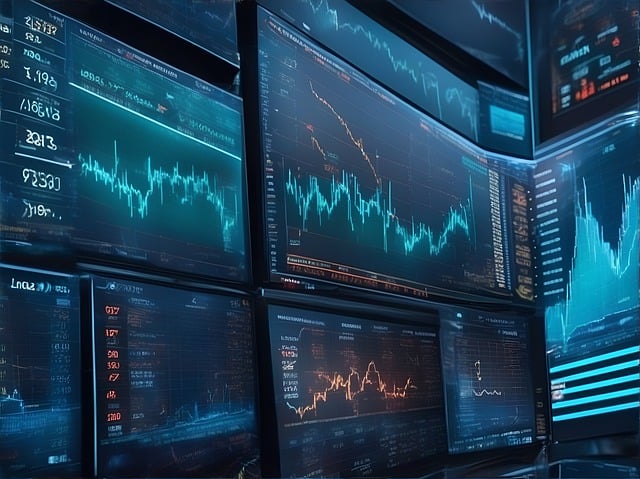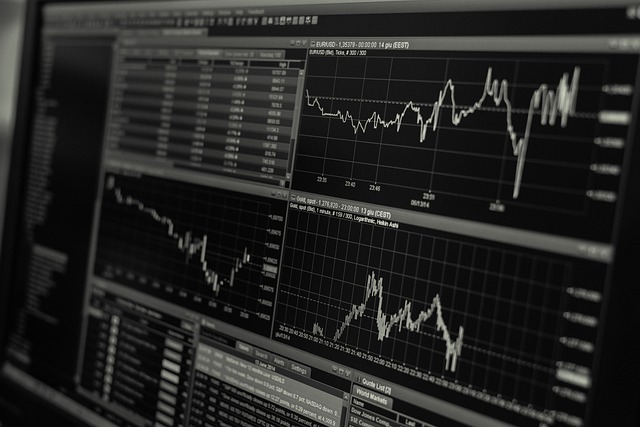Revolutionizing Finance: The Comprehensive Guide to AI Trading Bots
Author: Jameson Richman Expert
Published On: 2024-08-07
Prepared by Jameson Richman and our team of experts with over a decade of experience in cryptocurrency and digital asset analysis. Learn more about us.
The realm of finance is undergoing a transformative journey, with artificial intelligence (AI) trading bots at the forefront of this revolution. These automated systems are designed to analyze market data and execute trades with remarkable speed and efficiency, promising to reshape how individuals and institutional investors approach trading. In this article, we will delve into the intricacies of AI trading bots, exploring their functionalities, benefits, drawbacks, involvement in algorithmic trading, and their future potential in the financial landscape.

Understanding AI Trading Bots
Before we dive deeper, it's vital to grasp what AI trading bots are and how they work. An AI trading bot is essentially a software program that utilizes algorithms and machine learning techniques to make decisions based on a plethora of market factors. These bots can conduct trades on behalf of the user, potentially outperforming human traders due to their ability to analyze vast amounts of data quickly.
The Core Functionality of AI Trading Bots
At their core, AI trading bots function through a series of interrelated processes:
- Data Collection: They scour market data, news feeds, and other inputs to identify potential trading opportunities.
- Signal Generation: Through technical analysis and predictive analytics, the bots generate buy or sell signals based on market trends.
- Execution of Trades: Once a signal is generated, the bot automatically executes trades at high speed, often utilizing sophisticated strategies that are hard for human traders to replicate.
- Risk Management: AI trading bots typically include risk management tools, such as stop-loss orders, to protect investments.
Types of AI Trading Bots
There are several different types of AI trading bots, each designed for specific market conditions or trading strategies:
- Trend-Following Bots: These bots operate on the principle that currently rising or falling prices are likely to continue in the same direction.
- Arbitrage Bots: They exploit price discrepancies across different exchanges by buying low on one exchange and selling high on another.
- Market-Making Bots: They provide liquidity to the market by continuously placing buy and sell orders, profiting from the spread.
Benefits of Using AI Trading Bots
The allure of AI trading bots extends beyond their operational efficiency. Here are some significant advantages:
1. Increased Efficiency
AI trading bots can process data at speeds impossible for human traders. This efficiency allows them to capitalize on fleeting market opportunities that may vanish within seconds. In my opinion, this speed is invaluable, especially in an ever-fluctuating market environment where timely decisions can lead to increased profits.
2. Emotionless Trading
One of the most significant barriers that human traders face is emotional decision-making. Fear and greed can lead to irrational trades, while AI trading bots operate solely on data-driven insights. This aspect of AI trading bots helps remove emotional biases and could potentially lead to more consistent trading results.
3. 24/7 Market Monitoring
While human traders need breaks, AI trading bots can operate continuously, analyzing markets around the clock. This capability allows them to react instantaneously to market changes, an essential feature in today's global trading environment.
Challenges and Risks Associated with AI Trading Bots
Despite their myriad advantages, AI trading bots are not without challenges and risks:
1. Dependence on Algorithms
AI trading bots operate based on algorithms formulated by human programmers. If these algorithms are flawed or based on outdated assumptions, the bot's performance can be poor. Here, I believe there's a need for ongoing oversight and optimization of these algorithms to remain relevant in changing market dynamics.
2. Market Volatility
Market conditions can shift dramatically due to unforeseen events (like geopolitical tensions or natural disasters). AI trading bots may struggle in such volatile environments unless equipped with adaptive algorithms. This limitation makes diversifying strategies crucial, as reliance on one solution could lead to disastrous outcomes.
3. Ethical and Regulatory Considerations
The use of AI in trading raises ethical and regulatory concerns. Issues like market manipulation and the lack of transparency in algorithm design can have implications for the broader financial system. I feel that as the industry evolves, a stronger regulatory framework will be necessary to ensure fair practices.

The Future of AI Trading Bots
The trajectory of AI trading bots is promising, characterized by advancements in machine learning, natural language processing, and data analytics. Here are a few predictions about how they could shape the future of trading:
1. Enhanced Machine Learning Models
As AI evolves, we can expect trading bots that utilize advanced machine learning techniques to improve decision-making. Companies are likely to invest in more sophisticated algorithms that can learn and adapt to emerging trends. In my view, this development will enhance the bots' ability to forecast market movements accurately.
2. Greater Accessibility
With the current trend toward democratization of trading, I believe AI trading bots will become increasingly accessible to retail investors. The introduction of user-friendly platforms that allow everyday individuals to deploy AI bots will broaden participation in financial markets.
3. Integration with Other Technologies
The convergence of AI with other technologies, such as blockchain and big data analytics, will open up new avenues for trading strategies and investment opportunities. The seamless integration of these technologies has the potential to create a more sophisticated trading ecosystem, and I find this synergy quite exciting.
Conclusion
In conclusion, AI trading bots represent a powerful innovation that holds the potential to revolutionize the trading landscape. While they offer numerous advantages, including increased efficiency, objective decision-making, and round-the-clock operation, they are not without their challenges. As technology continues to evolve, I am optimistic that these bots will become more sophisticated, accessible, and integrated into broader financial systems. However, with this progress comes responsibility, and ongoing efforts in regulation and ethical considerations will play a pivotal role in shaping the future of AI trading bots in finance.